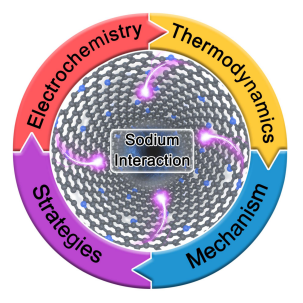Sodium ion batteries (SIBs) have been extensively investigated as a promising alternative for lithium ion batteries (LIBs) owing to the readily available character of sodium, lower costs of battery systems, as well as a similar working mechanism to LIBs. However, this view turns out to be oversimplified; countless reviews especially in the last years contradict each other, and it is still a challenging task to design highly performing electrode materials for SIBs. Due to the larger radius of Na+, its lower covalent character, and the resulting changes in intercalation chemistry, sodium is far from being only the bigger relative of lithium, and the difference leads to altered loading curves, and the occurrence of a multiplicity of binding sites. An in-depth holistic understanding of the sodium storage mechanisms is needed to resolve the controversial discussions in the research community, ideally starting with unquestionable thermodynamic points. Here, taking a tutorial perspective, first the recent discussions on the storage mechanism of sodium in carbons are reviewed from an unorthodox viewpoint, namely addressing sodium uptake as a multifaceted adsorption process with an added electrochemical binding potential. This model is based on literature data. Afterward, challenges and perspectives revealed by such a model are discussed.

This research, “A reanalysis of the diverse sodium species in carbon anodes for sodium ion batteries: a thermodynamic view”, was published in an international academic journal named Advanced Energy Materials. Henan University is the first signatory. Professor Zhihong Tian, the “Yellow River Scholar” of the Engineering Research Center for Nanomaterials, is the first author. Yu Zhang, a distinguished research fellow of East China University of Science and Technology, and Professor Markus Antonietti of Max Planck Institute of Colloids and Interfaces are the co-corresponding authors. This work has been strongly supported by National Natural Science Foundation of China, Henan University and Max Planck Society of Germany, etc.
The paper link: https://onlinelibrary.wiley.com/doi/full/10.1002/aenm.202102489

 Research /
Research Achievements /
Science & Technology /
School of Chemistry and Molecular Sciences /
Content
Research /
Research Achievements /
Science & Technology /
School of Chemistry and Molecular Sciences /
Content


